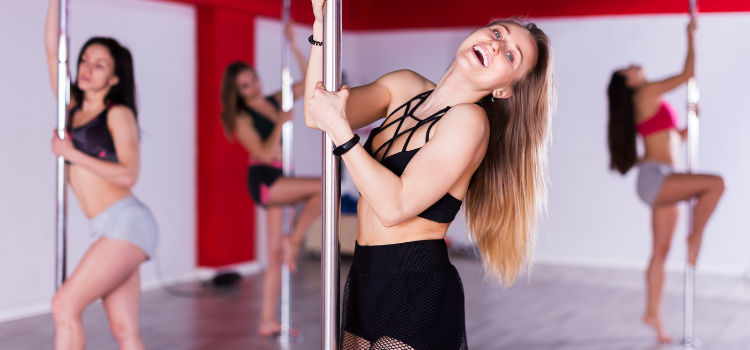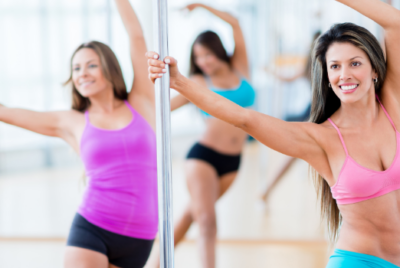Learn to Pole Dance: Unleash Your Inner Strength and Confidence
Introduction
Hey there! If you’re looking for a fun and empowering way to stay fit while embracing your sensuality, try and learn to pole dance, have a go, it might be just what you need. Pole dancing has evolved from its origins in strip clubs to a respected art form and fitness activity. It combines strength, flexibility, and creativity into a beautiful and challenging practice. In this article, I’ll guide you through the world of pole dancing, highlighting its benefits and providing helpful suggestions to get you started on your pole dance journey.
Benefits of Pole Dancing
Pole dancing offers numerous physical and mental benefits that can positively impact your overall well-being. Firstly, it’s an incredible workout that engages your entire body. By performing spins, climbs, and inversions, you’ll build strength in your arms, core, and legs while improving your cardiovascular endurance. It’s a dynamic and exciting way to tone your muscles and improve your overall fitness.
Apart from the physical gains, pole dancing also enhances flexibility and coordination. As you progress in your practice and learn to pole dance, you’ll notice improved range of motion and a greater ability to flow between moves. The intricate choreography and transitions require precise coordination, helping you develop grace and body awareness.
One of the most remarkable aspects of pole dancing is its ability to boost self-confidence and promote body positivity. As you conquer new moves and push your limits, you’ll witness your own strength and capabilities. This newfound confidence transcends the pole and permeates other areas of your life, empowering you to embrace your body and celebrate your uniqueness.
Additionally, pole dancing serves as a fantastic stress reliever and contributes to improved mental health. The combination of physical activity, music, and creative expression releases endorphins, which elevate mood and reduce stress levels. The supportive and non-judgmental pole dance community also provides a safe space for self-expression, fostering a sense of belonging and emotional well-being.
Getting Started
Now that you’re excited about the benefits of pole dancing, let’s dive into how you can get started on your journey.
Choosing the right pole: Before you can begin practicing, you’ll need to invest in a sturdy and reliable pole for your home or find a reputable studio that offers classes. Consider factors such as pole material, diameter, and static or spinning functionality based on your preferences and skill level.
Setting up a safe practice space: Create a dedicated area where you can safely practice your pole dance moves. Ensure there’s enough space around the pole to perform spins and inversions without obstructions. Remove any slippery or sharp objects from the vicinity, and make sure the pole is securely installed according to the manufacturer’s instructions.
Warm-up and stretching: Just like any physical activity, warming up is crucial to prevent injuries and prepare your body for the demands of pole dancing. Spend a few minutes performing dynamic stretches and engaging in light cardio exercises to increase blood flow and loosen up your muscles.
Learn to Pole Dance with some Basic Moves
Now that you have the essentials covered, let’s explore some of the basic pole dance moves that will lay the foundation for your pole dance journey.
Introduction to basic spins: Start with simple spins like the fireman spin or the chair spin. These moves involve wrapping your body around the pole while maintaining a firm grip and controlled movement. Mastering these spins will help you build strength and familiarity with the pole.
Gripping techniques and hand placement: Proper hand placement is crucial for maintaining a secure grip on the pole. Learn different gripping techniques, such as the cup grip and the split grip, to enhance your stability and control during various moves.
Climbing the pole: Climbing the pole is an exhilarating move that requires upper body strength and coordination. Begin with basic climbs using your hands and legs and gradually progress to more advanced climbing variations.
Inversions and holds: Inversions, where you’re upside down on the pole, are a hallmark of pole dancing. Start with simple inversions like the basic invert or the thigh hold. These moves require practice, strength, and confidence, but they’re incredibly rewarding once you conquer them.
Progression and Challenges
As you become more comfortable with the basic moves, it’s essential to challenge yourself and progress in your pole dance journey. Gradually increase the difficulty of your routines by incorporating more complex spins, holds, and transitions. Push yourself to try advanced moves like the extended butterfly or the shoulder mount, but remember to always prioritise safety and listen to your body’s limits.
Don’t be discouraged by temporary setbacks or limitations. Pole dancing is a unique combination of strength, flexibility, and artistry, and everyone progresses at their own pace. Embrace the learning process, and celebrate each milestone along the way. Your determination and perseverance will reward you with growth and a deep sense of accomplishment.
Safety and Injury Prevention
While pole dancing can be thrilling and empowering, it’s crucial to prioritise safety and prevent injuries. Here are some essential tips to keep in mind:
Importance of proper technique: Ensure you learn proper technique and form from a qualified instructor. Correct alignment and execution of moves minimise the risk of strains or sprains.
Wearing appropriate attire: Opt for form-fitting clothes that allow your skin to grip the pole. Avoid loose or slippery fabrics, as they may hinder your grip and increase the chance of accidents.
Listening to your body: Always listen to your body’s signals. Take breaks when needed, and don’t push yourself beyond your limits. Rest and recovery are vital components of a healthy pole dance practice.
Avoiding common injuries: Be mindful of overexertion and repetitive strain. Gradually build strength and flexibility to prevent muscle imbalances or joint issues. If you experience any discomfort or pain, consult a medical professional.
Finding a Pole Dance Community
To enhance your pole dance journey, consider immersing yourself in a supportive and vibrant pole dance community. Here are some ways to connect with fellow enthusiasts:
Joining a studio or class: Enrol in a local pole dance studio or sign up for classes offered at fitness centres. Instructors will guide you, provide valuable feedback, and create a nurturing environment for your growth.
Participating in workshops and events: Attend workshops and events hosted by renowned pole dancers and instructors. These gatherings offer opportunities to learn from experts, gain new insights, and connect with like-minded individuals.
Connecting with fellow pole dancers: Learn to pole dance with fellow beginners and pole dance enthusiasts and make some new connections. Engage with the pole dance community online through forums, social media groups, and dedicated platforms. Share your progress, ask questions, and seek advice from experienced pole dancers who can provide guidance and encouragement.
Conclusion
Congratulations! You’ve taken your first step into the fascinating world of pole dancing. By embracing this art form and fitness activity, you’ll embark on a journey of self-discovery, strength-building, and creative expression. Pole dancing offers an array of physical and mental benefits while fostering confidence, body positivity, and a sense of belonging.
Remember, your pole dance journey is unique to you, so don’t compare yourself to others. Celebrate your progress, enjoy the process, and always prioritise safety. So, what are you waiting for? Unleash your inner strength, express your sensuality, and embrace the joy of pole dancing!
FAQs
Q1: Can anyone learn to pole dance?
A1: Absolutely! Pole dancing is an inclusive activity open to individuals of all ages, genders, and fitness levels. With dedication, patience, and the right guidance, anyone can learn and enjoy pole dancing.
Q2: Do I need upper body strength to start pole dancing?
A2: While upper body strength can be beneficial, you don’t need to be incredibly strong to start pole dancing. As you progress in your practice, you’ll gradually build strength and develop the required muscles.
Q3: Will pole dancing help me lose weight?
A3: Pole dancing is a fantastic form of exercise that can aid in weight loss when combined with a healthy diet and regular practice. It’s a fun way to burn calories, improve muscle tone, and increase your overall fitness.
Q4: What should I wear for pole dancing?
A4: It’s best to wear form-fitting clothes that expose your arms and legs, allowing your skin to grip the pole. Sports bras, tank tops, shorts, and leggings are popular choices. Remember, comfort and freedom of movement are key.
Q5: Is pole dancing only for women?
A5: Not at all! While pole dancing has historically been associated with women, it’s an activity that welcomes individuals of all genders. Men can also benefit from the physical and artistic aspects of pole dancing and find joy in the practice.




